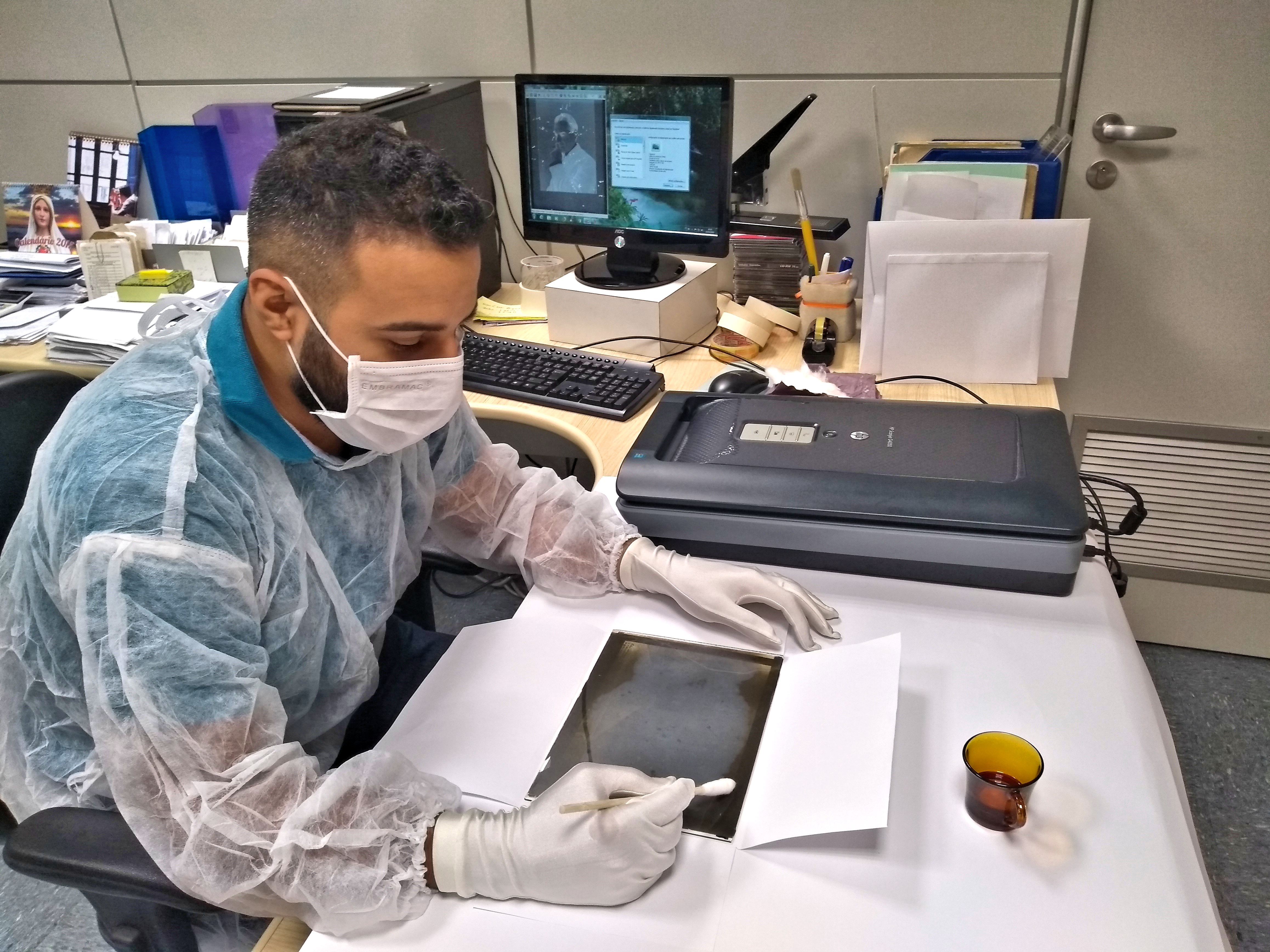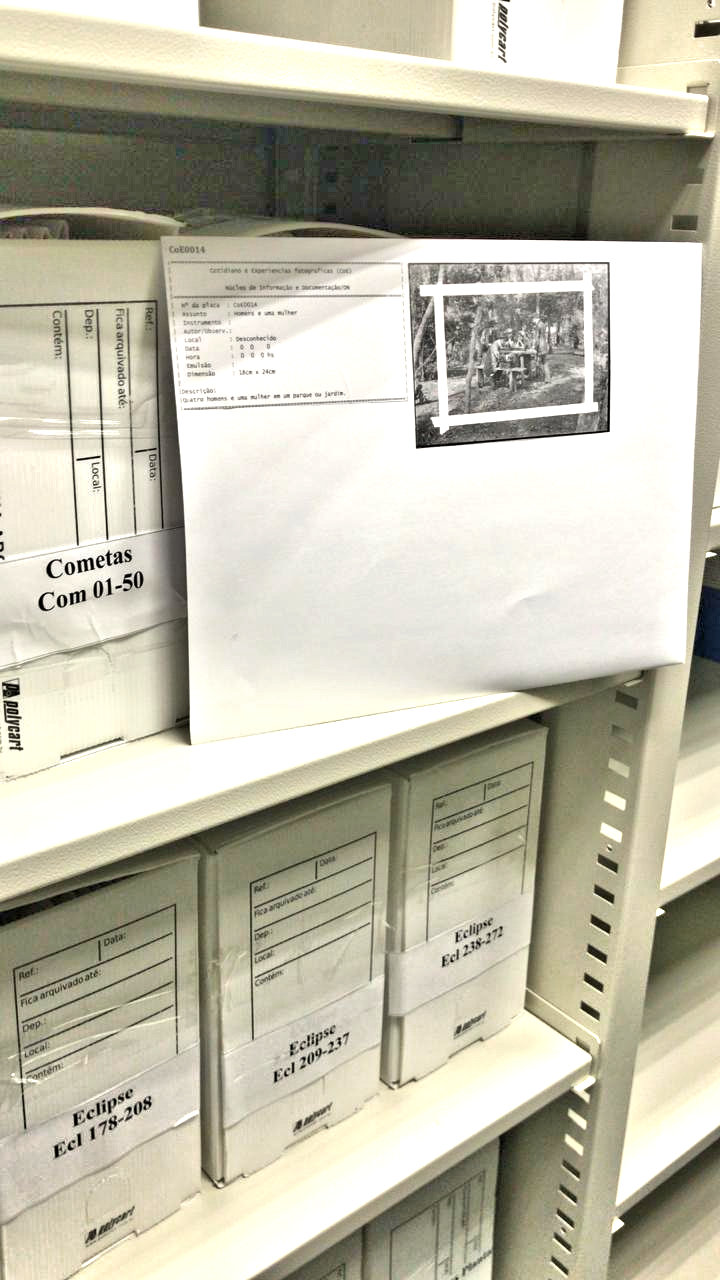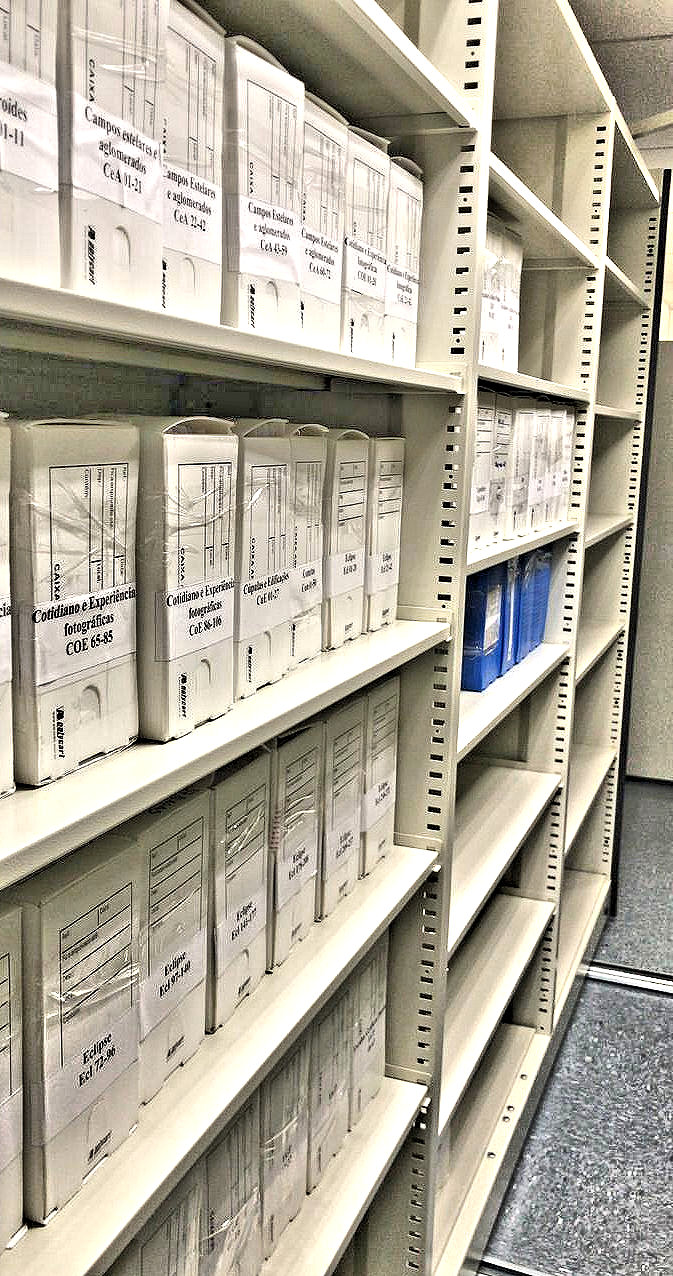Project description
Introduction
Created in 1827, the Observatório Nacional is one of the oldest scientific institutions in the country, responsible for a number of important projects in the history of its technical-scientific development. We highlight the pioneering in the leading researches in Astronomy, Geophysics and in the determination and dissemination of the Brazilian legal hour, a relevant service to the country.
Importance
Although restricted in the range of activities proposed for the preservation and diffusion of a part of the Observatório Nacional library collection, this project intends to broaden the range of interaction with other research centers currently dedicated to the maintenance of the national scientific memory. To achieve that, the results of the project are made available on the website (www.on.br) and in the physical collection of the institution. Therefore, it is expected to increase its visibility for society.
Internally, the project strengthens the collection’s conservation and restoration plan, motivating and involving more researchers who are interested in the preservation of the Observatório Nacional’s scientific memory.
Goal
The project aims to preserve the scientific memory of the Observatório Nacional expressed in the historical collection composed of 948 photographic glass plates.
In 2015, in a preliminary experimental work, 61 photographic plates were selected, which included the observations of the eclipse and of images depicting the daily routine of the city of Sobral, located in the State of Ceará, Brazil. This eclipse was of particular importance to modern Physics, since, from its observation, it was possible to prove one of the postulates of Albert Einstein's Theory of General Relativity (1879-1955): the effect of the deflection of light, in which a beam of light (in this case, coming from a star) should have its trajectory curved (or deviated) when passing in the vicinity of a strong gravitational field (in this case, generated by the Sun).
This subset of plates has been sanitized, digitalized in high resolution and stored safely, preserving the information contained in it. The results of this work were published in the Ciência Hoje (Science Today) magazine, November 2015, 331, Vol. 56, pages.34-39, Magazine of Fapesp, Ed. 240, February 2016 and in the website: https://daed.on.br/sobral/
Given the good results achieved, from this work there was a greater motivation to continue the digitalizing of the entire collection of photographic plates. In January 2018 the project Photographic memory on glass plates got started, establishing the following work schedule:
- Classification of plates in 13 major subjects
- Development of software to manage the image database
- Manufacture of packaging in special paper
- Sanitization of the 948 photographic plates of the collection
- Scanning of the plates, generating high resolution images to compose the database
- Wrapping of the plates in special packaging
- Inclusion of the plates in the physical collection of the library
- Creation of mechanisms to make the images available on the institutional page
The project began with the understanding that the images recorded on glass plates, in addition to their value as cultural heritage, are important sources for the historiography of science.
Thus, the goals of this project are:
- Increase the visibility of the Observatório Nacional library
- Make the work available to society by offering a material that is:
classified, sanitized and digitalized, thus preserving the information,
expressed in essence, by images recorded on the photographic plates.
Project justification
This is not a scientific research project, since many of the images recorded on the photographic glass plates lack complete and accurate data, such as dates, authors, locations, description of objects and bibliography. These plates were obtained in the late nineteenth and mid-twentieth century.
In general, ancient history is imprecise by nature. It is within this assumption that it is based to say that the Observatório Nacional has a collection of glass plates that show moments of the history of Astronomy, Geophysics and daily life, but, due to the lack of some information, they cannot be used for scientific purposes. The information was exhaustively searched in several bibliographic sources, in reports, interpretations and personal assumptions.
It can be said that this is an open project due to the lack of some data. So, the contribution and collaboration of experts or connoisseurs of the subject is very important. However, one cannot fail to recognize its historical relevance, since the mere fact of having such an expressive number of images on glass plates shows a rich phase of the Observatório Nacional's photographic record.
Despite of the uncertainties, these images still are strong and exciting, because they bring in their essence the energy of the effort to keep records of a unique time period. These are images obtained without many technical resources, without sophisticated computational enhancements, but that reveal their authenticity and naturalness.
Notably, the richness of each image lies in the careful selection of the photographic emulsion , the amount of light incident on the camera lens, and in the detail of the angle, captured by the sensitive gaze of an astronomer or photographer. The modern RGB (Red Green Blue) technology, used to compose images with millions of colors, which hit the commercial market in 1907, has not diminished the interest in black-and-white photography with a large scale in shades of gray. To this day, early twenty-first century, professional photographers make records on the monochromatic scale.
Finally, this project has no purpose of making any comment or scientific analysis on the material presented.
Infrastructure
All project activities, such as sanitizing, packaging, digitalization and dissemination were developed and implemented at the library of the Observatório Nacional facilities.
Human resources
The project was developed by a team composed of a researcher from the Coordination of Astronomy and Astrophysics department, two librarians from the Division of Science Communication and Popularization, a fellow from the Center for Company-School Integration (CIEE) and a collaborator that develops Web applications, dedicated to the historical contextualization of the production of scientific knowledge in the institution. It is a multidisciplinary team, gathered around the interest in preserving the scientific memory of the Observatório Nacional.
Classification of photographic plates
The set of 948 glass plates was digitalized with the purpose of preserving the photographic memory of the Observatório Nacional, which images have relevance in the historical-scientific scenario of Brazil.
Over one hundred years of observations and registrations on glass plates carried out in the campus of the Observatório Nacional and in national and international expeditions and campaigns were classified, sanitized, digitalized and stored, which images, the main result of this long project, are made available to the entire population .
This important collection contains images of total and partial eclipses of the Sun and of the Moon, planets, fields and star clusters, comets, asteroids, scientific instruments, domes, buildings, seismograms and magnetograms and the daily routine of the scientific expeditions recorded by Henrique Morize (1860 -1930), important director for the history of the Observatório Nacional.
The photographic plates were classified into thirteen major subjects. For purposes of organization and reference, each subject has an acronym, shown in parentheses. Thus, the scanned images have the name formed initially by three letters associated to a number to facilitate their location in the digital database and in the physical collection of the library of the Observatório Nacional.
The images and their information can be accessed on the main page of this site by clicking on one of the thirteen mosaic icons or one of the items in the Menu of the sidebar.
Treatment and sanitization of the material
The treatment and sanitization of the photographic plates obeyed the norms established by the National Foundation of Arts (Funarte). It is a foundation of the Brazilian ederal government, linked to the Ministry of Culture, which, among its public policies goals, encourages the preservation of national memory.

A delicate sanitization was carried out only on the glass, the opposite side to the photographic emulsion, which is a combination of gelatin and silver salts that are sensitive to light, where the images are recorded. The plates have dimensions ranging from 9cm x 12cm to 30cm x 24cm.
Many plates were found in poor conditions: painted with red paint (for the purpose of highlighting details of the images), loose and broken emulsion, among other depredations.
The glass plates are stored in envelopes, which contain the following tagged information on them: sequential number by subject, a descriptive file of the contents of the plate and its image on paper.

Above, one can see, for example, an envelope, which houses a photographic plate, where the sequence number is shown, a descriptive sheet, within the addressed subject and a paper copy of the image of the plate.
Software development
To organize, manage and make available the information generated from the digitalization of the collection of glass photographic plates of the Observatório Nacional, it was necessary to develop computer programs (softwares) that would generate preliminary data and build a digital database to optimize the work. Thus, the programs produced lists ordered by subject, the continuous numbering of the images and the labels to be affixed to the envelopes that store the plates.
These programs were conceived as an information system to optimize the various phases of the production process of this work.
Scanning process and storage
The photographic plates were digitalized with appropriate equipment for turning slides into images. The equipment was configured with parameters suitable for generating high resolution images with 1200 dots per inch or "Dots Per Inch" (dpi), enough to ensure good visual quality. On average, each image occupies a space of approximately 30Mbytes. The entire set of 948 images totals approximately 30Gbytes, which are stored in a database.
The collection of photographic plates is divided and packaged in boxes and stored in the physical space of the Observatório Nacional library.

Difficulties for the execution of the project
Difficulties are inherent factors, of any order, found in any type of project: external, unexpected and unforeseen problems, intrinsic to the complexity degree of its execution. The greater the originality of the work, the greater the probability of occurring unforeseen problems, due to the lack of mastery and knowledge about the subject under study.
The process of strategic planning and alignment for the execution of complex tasks is not trivial. There is a commitment and a need to integrate all phases of the production process, either by the dynamics with which information can be analyzed for quick decision making, or by reducing the volume of errors.
In general, there is no way to avoid difficulties or problems throughout a project. As much as there is a thorough and careful previous detailing of all the "ifs", there will always be conditions that have not been imagined and programmed. In a practical sense, once all possibilities to minimize the difficulties of correctness have been exhausted, it is common to use the trial and error "process". But, depending on the matter in hands, using this method can be very disastrous. Using intuition or empirical methods as a problem-solving tool is not a process that can be proven or justified.
In the case of this project, the main difficulty found was to identify the elements to compose a complete and exact description of the object under examination.
Undoubtedly, the lack of information is a fundamental factor for a work to be validated in its completeness. However, as the project does not propose to carry out a scientific or technological investigation of the content of the photographic plates, one can affirm that it is enough to present it "In natura", even in an incomplete form sometimes, but with the clear objective of showing it as the figure of the expression of a historical survey.
Another aspect of the difficulties encountered was obtaining support, either for financial or technical reasons, to supply, at the time of its execution, the simplest demands of this project. There were no open edicts in the incentive to research bodies, such as CNPq or FAPERJ, for the project to be submitted and appreciated.
One can cite the lack of suitable digitalizing and computational equipment to generate images with better resolution, shortage of material for the sanitization, identification and storage of photographic plates. Also, the hiring of more human resource to reduce costs and minimize the execution time of the work of the personnel involved.
Results
Finally, the results of the survey of 948 photographic glass plates of the Observatório Nacional are presented. The project was carried out in 15 months, from the strategic planning phase until the digitalized images were made available on the institution's website. As initially planned, the project followed the schedule defined in the goal of this work.
With the survey of the glass plates carried out and made available, it is the future perspective of this project to carry out a series of publications, in magazines specialized in spreading science, from the various digitalized subjects.
The consolidation of the results of the digitalization of this collection is represented in the statistical chart below. It displays the number of plate images sorted by subject. Click on the graphic to see the images.
Organization and execution of the project
Contributors
Acknowledgements
This project was only possible thanks to all those who directly or indirectly contributed with their work for the construction and formation of this relevant collection of photographic glass plates of the Observatório Nacional.
